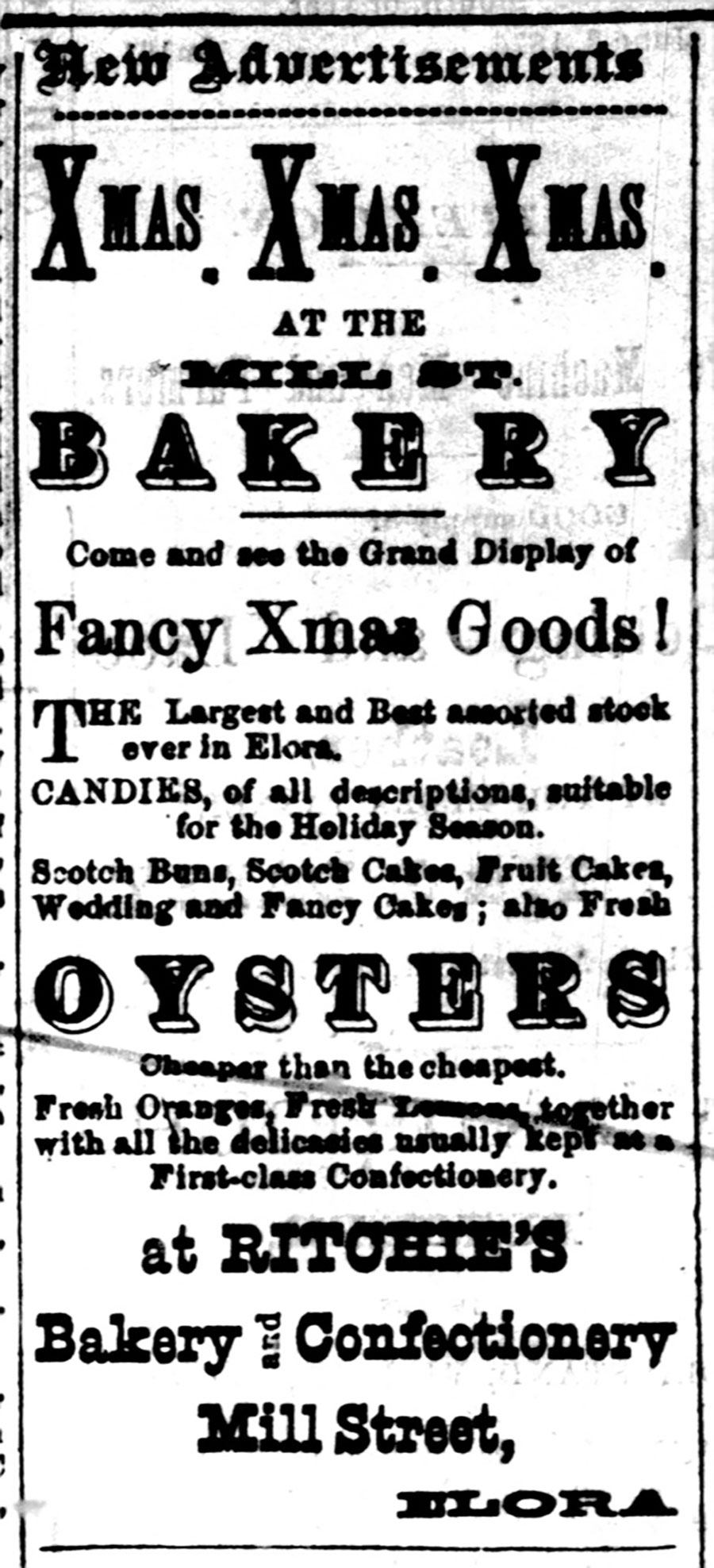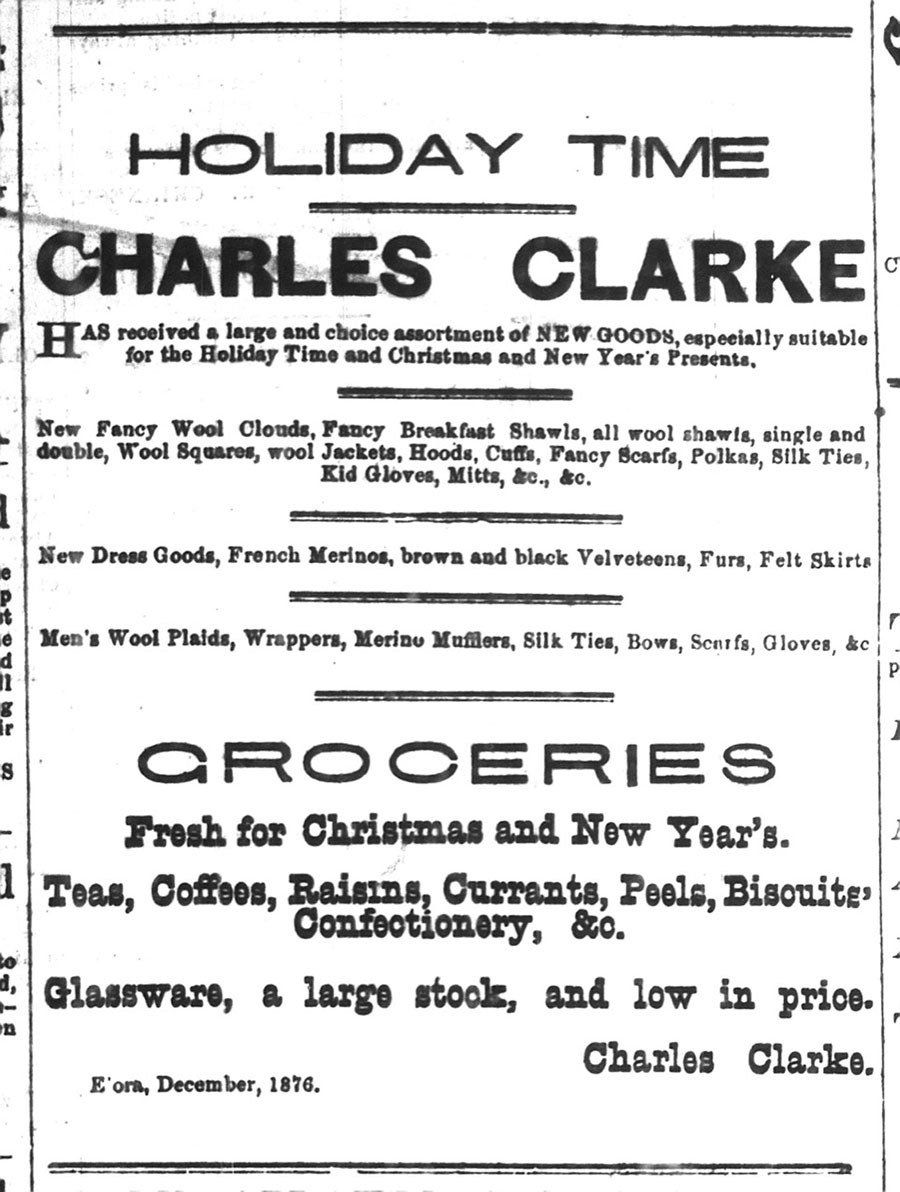The following is a re-print of a past column by former Advertiser columnist Stephen Thorning, who passed away on Feb. 23, 2015.
Some text has been updated to reflect changes since the original publication and any images used may not be the same as those that accompanied the original publication.
As I get older, the years seem to pass with increasing speed.
A glance through my file of previous columns for the Elora Sentinel reminded me that this is my third Christmas offering of something that is both historical and seasonal. It seems that the Valuing our history column has already established a tradition.
In preparing for the Christmas column this year, I spent some time looking at the December 1876 issues of the Elora Observer.
The year 1876 has some interesting parallels with the past couple of years.
The mid-1870s were years of economic stagnation and dislocation in Canada generally, and particularly in Elora. The local economy suffered in these years as a result of business failures and fires. Unemployment was high, and those who had jobs were fearful of losing them. Farmers struggled with declining markets: prices had been going down steadily for a decade.
As a result, consumers were disinclined to spend money, even when they had some. As is the situation today, economic conditions had an impact on the way Christmas was celebrated almost 150 years ago. Consumers looked hard for good prices, practical items and quality goods — and merchants had to respond to these demands to make sales.
Christmas sales in 1876 were far less important to merchants than they would become in the 20th century. Nevertheless, several Elora merchants published special advertisements, offering special items for the season in 1876.
Luxury items tended to be food: special cakes, candies, and tinned goods, which were still something of a novelty (and an expensive one) on the market at the time. A special treat was fresh citrus fruit, which offered pleasant relief from the bland, greasy food that dominated 19th-century diets.

Christmas gifts – Overindulgence at Christmas is nothing new. In December 1876, T.N. Ritchie enticed the public with special Christmas cakes and candies. To boost sales in slow economic times, Ritchie added lines of canned goods and fresh fruits. Both were expensive at the time; many consumers considered them special treats to be purchased only at the Christmas season. Wellington County Museum & Archives, Elora Lightning Express, Dec. 22, 1876
Charles Clarke’s Christmas advertisement suggested items of practical clothing for gifts, while Stephenson’s jewelry store offered what today would be called luxury items, while stressing the fact that he was selling them as cheaply as possible.
At the post office bookstore, gift-givers could find a wide assortment of magazines, books, bibles, albums, and scrapbooks, as well as a line of toys, one of the few offered in Elora at that time.
Children were lucky to receive even one toy at Christmas.
Old newspapers provide information on the public and commercial sides of Christmas, but virtually nothing on the cultural and family customs that were practised at the time. The latter are popular themes at many museums, many of which provided an interpretation of a 19th century Christmas each year, showing how various traditions have combined to form the modern North American Christmas.
Some traditions, though, do not survive. For example, Charles Clarke and Sam Stephenson advertised New Year’s presents in their 1876 advertisements. Scottish New Year’s traditions have largely disappeared in the Elora area.
In 1876, a few Protestant extremists shunned Christmas altogether, believing it to be a Roman Catholic holiday.
Local citizens could take in a number of special activities during the 1876 Christmas season. Some of Elora’s clubs and societies put on Christmas pageants and concerts, and there were a few private parties. The Methodists put on a special service twice on Christmas Day, and the following afternoon staged a Christmas festival in the church, complete with a large Christmas tree.
The week between Christmas and New Year’s in 1876 was a quiet period, much as it is today.
The Observer’s John Smith announced that he would publish only a single-page paper that week. Politics enlivened the period slightly, in anticipation of the municipal election held on New Year’s Day, 1877. For the record, Hugh Hamilton defeated John Godfrey by 11 votes for the reeve’s gavel, and John Bain, Andrew Smart, John Mundell, and John Henderson captured the seats on council.
In recent months, the business community has reported that consumers seem to be feeling more confidence than in the previous few years, and that trade, though not booming, is healthy.
The December snowfall of 1876 that brought so many farmers into town had a similar effect. Then, as is the case now, the Christmas season offered a time for reflection on the previous year and anticipation for the future: a future coloured with hope and optimism.
*This column was originally published in the Elora Sentinel on Dec. 22, 1992.




